The premise of this book is delightful: a novella in 51 short chapters, describing the life of famous 17th-century Chinese painter Bada Shanren, partly through his paintings themselves, which are reproduced in the book. The writing in places was quite beautiful, but as a novella it didn’t really work for me. I’ll attempt to explain why.
Part of it, I think, is the difficulty of describing art in words. I had a similar problem with the descriptions of jazz in the Booker-shortlisted Half Blood Blues last year – I wrote then, “No matter how good the descriptions are, it’s really hard to convey the beauty of music through the written word. There are lots of passages in this book about Hiero blowing a high C or Chip playing crisp and clean on his drums, but I still couldn’t hear the music.
It was exactly the same for me here. I read something like the following:
He covered the small piece of paper he had laid out with a few rapidly executed vertical and horizontal strokes. In the right half of the picture he interrupted a downwards sweep by lifting the brush and, from the centre of the paper, painted a broad line which he guided along a gentle incline to the right-hand edge of the paper, then made a straight brushstroke from the end of this down to the bottom with a single fluid movement of the hand…
Nothing wrong with the writing, but I couldn’t really see the painting – until I turned the page and was presented with an image of the painting itself, which looked completely different from the half-formed image in my head, and which at a glance communicated far more than the preceding page of description (I only reproduced a small portion of it here). I know that the point was to get behind the images, to add another dimension to them by imagining what the painter was feeling as he made those brush-strokes. I applaud the aim, but for me it didn’t really work.
I should say, though, that it seemed to work for others – I appear to be out on a limb here. Haven’t seen too many reviews yet, but the ones I have seen are mostly positive. Check out, for example, Little Words or My Book Year. And Die Tageszeitung said “You feel that you are watching the painter at work.” This was clearly a major aim of the book, but I didn’t feel that at all, and so the descriptions of brushstrokes became quite repetitive.
Another problem I had was that 51 chapters in 100 pages means, of course, that the chapters are incredibly short – in some cases just half a page. Yet each chapter does deal with a separate episode in the painter’s full and varied life. The result is that the narrative feels episodic, not a story but a series of separate anecdotes, none developed very fully.
For example, the blurb for the book states “In 1626, Bada Shanren is born into the Chinese royal family. When the old Ming Dynasty crumbles, he becomes an artist, committed to capturing the essence of nature with a single brushstroke. Then the rulers of the new Qing Dynasty discover his identity and Bada must feign madness to escape.” It sounds intriguing, but the feigning madness and escaping all take place in a single chapter of less than two pages. They find him, he feigns madness, he escapes. Then it’s on to the next thing. I think the book would have worked better if the author had described a few key events from the painter’s life, rather than trying to cover everything and doing so only thinly. I hate to say something like that, because I know this is the book the author wanted to write, but that’s my take on it.
Having said all that, there were things I liked about Sea of Ink. There were some beautiful passages, like the painter as a boy learning from his father, who never speaks a word and yet manages to communicate. I loved the image of the boy stepping into a bowl of ink and walking along a long scroll, his footprints getting lighter with each step, and his father then writing on the scroll: “A small segment of the long path of my son Zhu Da. A path comes into existence by being walked on.”
There’s a real poignancy to the young painter’s abrupt loss of his wife and son as the Ming dynasty crumbles and he is forced into hiding, and I loved how these memories were handled later, as the painter, now a monk, starts to become detached from them but can never truly relinquish them. The writing is simple, spare and sometimes beautiful, a perfect accompaniment to the paintings in which so much is communicated with only a few strokes of black ink.
I’d love to hear from anyone else who’s read the book and has a different take on it. Or of course, agreement is always good! Or if you haven’t read it, does it sound like the sort of thing you’d like? Let me know in the comments below. In the meantime, I’ll leave you with a few images (which you can click to enlarge) from the artist, Bada Shanren:
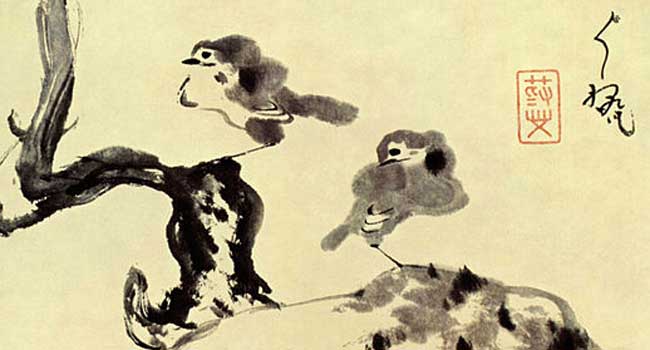
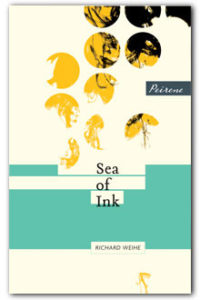
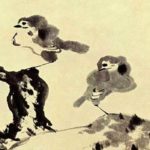
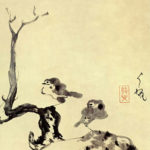
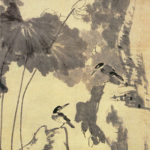
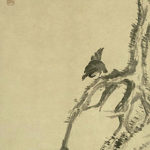
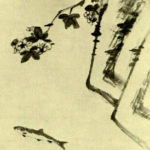

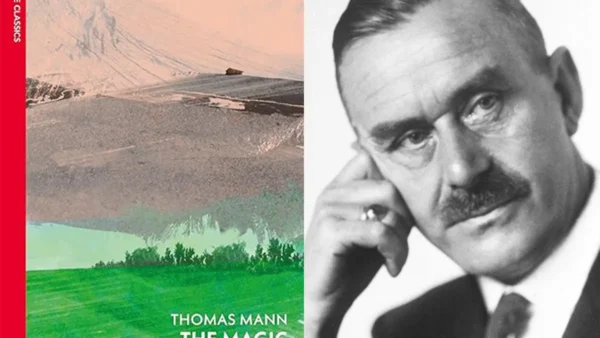

There are 11 comments
When I saw this was being published by Pereine I looked ofr the German original but it’s out of print.
I have read a few stories and novels focussing heavily on art or music and it worked for me but maybe they wrote in a different way. Should I ever be able to read the original, I’ll let you know.
That’s interesting, Caroline – I think most of the books they’ve published so far have been pretty big hits in their original language, so I’m surprised to hear this one is out of print.
I’m sure that writing about art or music can work – I just think it’s difficult to pull off. Would like to hear which ones you can recommend – I’d love to see it done well!
Having just written about negative reviews and my feeling that they need to be well done, I read this and feel it was extremely well done! Not of course that you are entirely negative – your review is very balanced and fair. I do know what you mean about those descriptions. I am not a fan of long descriptions of machines or how one thing sits in location to another, or even certain nature descriptions. All too often the more precise and accurate a description is supposed to be, the more trouble I have imagining it. I think picturing music or the act of painting would be extremely difficult to do. Woolf was very sensible when she reduced her description of Lily Bart’s painting to the addition of one line in To The Lighthouse!
Thanks very much! I’m glad it didn’t come across as entirely negative, because there were things I liked about the book. Sometimes when something doesn’t work, I spend a lot of time figuring out why, and then worry that I’ve overplayed it in my review!
Anyway yes, long descriptions are tough, especially of something that is very visceral in a different format, eg books or music. Converting it to words seems like diluting it. Anyway as Caroline said, I’m sure it can be done well, but it’s a tough challenge. Ah, that Virginia Woolf, she always takes the easy route 😉
Quite agree with Litlove’s comment that “All too often the more precise and accurate a description is supposed to be, the more trouble I have imagining it. ” Seeing works of art generate intuitive feeling that maybe sometimes hard to put into words. I read some Chinese writings describing a piece of art, and find it full of vague descriptions that is overwhelmingly meaningless.
By the way, Bada is my favourite Chinese painting. His works caught my eyes when I was searching for Chinese painting books in a library. That’s right after my first Chinese painting class. Over the years, I never stop liking his paintings. And, I started to ask myself why I like Bada. My conclusion is : I really feel the “freedom” that his works project because his way of painting is so indoctrinate. My Chinese painting teacher told me that for a beginner, there is nothing I can learn from Bada but he did said Bada is truly one of the greatest artist and his works come with a very strong character. Maybe his unique style is what I like. I particularly like Bada’s use of space so much more than ink itself ! And, you know what, the fish he drew are with eyes that stares right into your eyes as an audience ! Still life (painted fish is a still life, isn’t it) gets on the ground….
Pardon my replying to this so late, I’ve had your review marked for reading since you posted it, waiting until I’d read it myself.
I found the same issue in the way the art was written, it was the only real negative I found. It was difficult to picture the painting until you looked at it, but more than that I think the literal nature of the descriptions were just a bit dull. It worked the first time, but after that it didn’t feel you’d be missing something if you skipped the description. It was interesting, no doubt about that, but as you say, it’s difficult to convey art in words – and surely that’s the point of the difference in media.
I loved the philosophical nature of the story, however. It was subtle rather than preachy as it often can be, and it was woven into the rest of the narrative well.
No problem, Charlie – I’m the same, never want to read someone else’s review if I’m about to read a book myself. Glad I wasn’t the only one to find the art hard to visualise. You’re right, the philosophical parts were not preachy at all. They didn’t really wow me enough to make me love the book, but I didn’t hate it either. Just left me a little disappointed compared with all the other Peirene books I’ve loved.
I’ll look forward to reading your review!
Yes, this sounds like the sort of thing I’d like. Then again, I like a lot of books that are quirky in a sense that they’re different and often do not have the elements of what a great book should be. On the other hand, I understand you very well. Failing to develop a story could lead to not connecting with a reader, which is one problem I foresee. I’d like to believe I can appreciate this and look past the episodic storytelling, because it seems really interesting. Then again, I’m half-expecting it might not connect with me as much as I’d like. Thanks for sharing your thoughts. You didn’t sound negative at all, just another point of view.
Yes, actually I think you’d really like this one, Claire. It has a sort of dreamy beauty that didn’t really come across in my review, and that I think would really appeal to you.
This looks like a beautiful book, Andrew! Sorry to know that you didn’t like it as much as you had hoped too. It is always tricky when a writer tries putting too many things in a slim book. The paintings that you have included are very beautiful. There was a time I used to read a lot about Chinese history and literature and even collected reproductions of paintings like this. My favourite historical characters were Bai Juyi (poet), Sima Qian (historian) and Kangxi (emperor). When I read your review it made me feel nostalgic 🙂 Thanks for this wonderful review.
You have very broad interests, Vishy! It’s good to hear that my review made you nostalgic – I think nostalgia is one of my favourite feelings 🙂
I haven’t read much Chinese history or literature, but I’ve read some of the philosophical texts, like the Tao Te Ching and the writings of Confucius.
I have an illustrated copy of the Tao Te Ching that I think you would love. You can see some of the images on Amazon here if you use the “Look inside” feature. Hope it makes you even more nostalgic!!